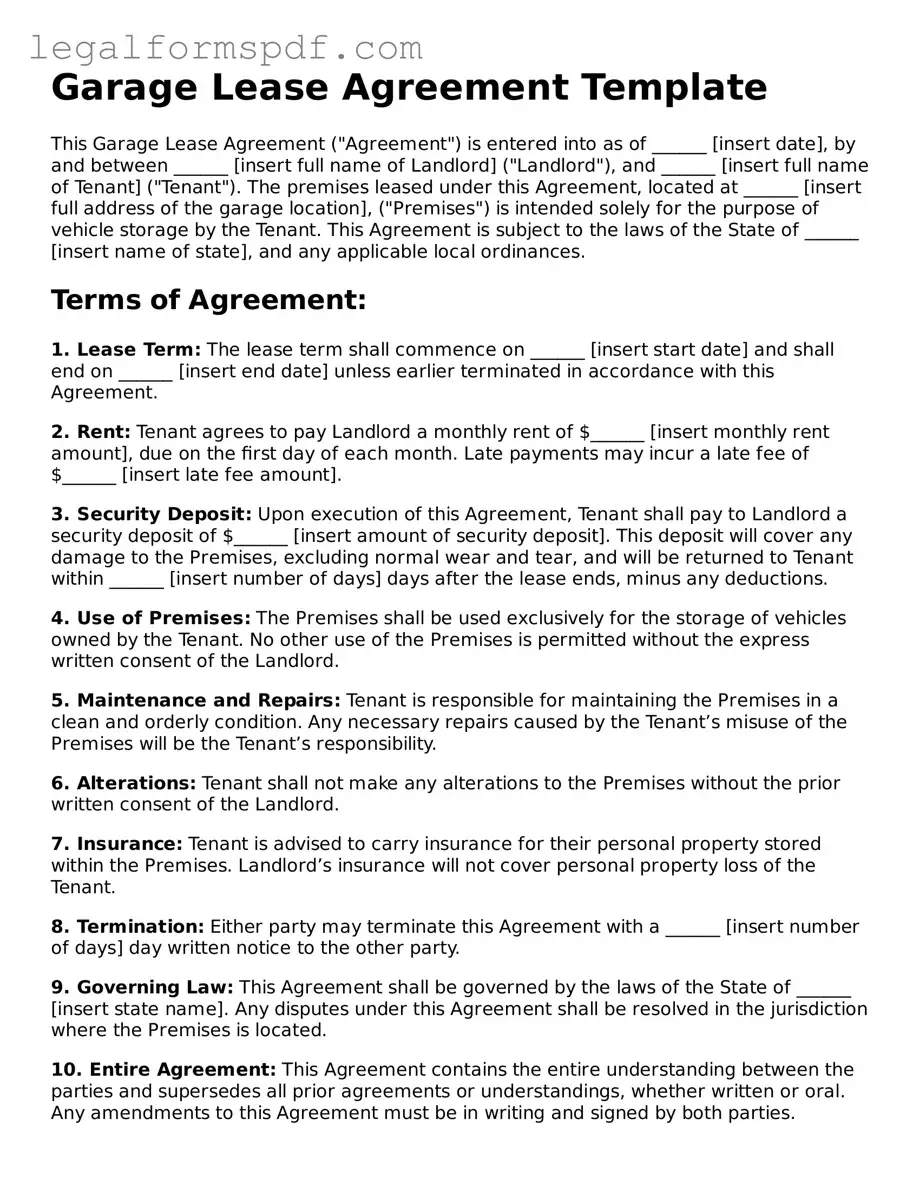What is a Garage Lease Agreement?
A Garage Lease Agreement is a legally binding document between a landlord and a tenant. It outlines the terms and conditions under which the tenant can use the garage space owned by the landlord. This includes the duration of the lease, rent amount, payment schedule, and any rules or restrictions regarding the use of the space.
Who needs a Garage Lease Agreement?
Landlords who wish to rent out their garage space and individuals or businesses looking for a garage to rent should use a Garage Lease Agreement. It's essential for ensuring that both parties understand their rights and responsibilities, minimizing potential disputes.
What should be included in a Garage Lease Agreement?
A comprehensive Garage Lease Agreement should include the names and contact information of the landlord and tenant, a description of the garage space, rental amount, payment terms, lease duration, security deposit details, use restrictions, maintenance responsibilities, and conditions for renewal or termination of the lease.
How long can a Garage Lease Agreement last?
The duration of a Garage Lease Agreement can vary. It might be set for a fixed term, such as six months or a year, or on a month-to-month basis. The length should be agreed upon by both the landlord and the tenant and be clearly outlined in the agreement.
Can the rent amount change during the lease term?
The lease should specify whether the rent can be adjusted during the term. Typically, for a fixed-term lease, the rent amount is fixed. However, for month-to-month leases, the agreement might allow the landlord to adjust the rent upon providing proper notice to the tenant.
Is a security deposit required for a Garage Lease Agreement?
While not always required, a security deposit is commonly requested by landlords as part of a Garage Lease Agreement. It covers potential damages or unpaid rent. The agreement should detail the amount, conditions for its return, and any circumstances under which the landlord can retain part or all of the deposit.
Who is responsible for maintenance and repairs?
Responsibilities for maintenance and repairs should be explicitly stated in the agreement. Generally, the landlord is responsible for ensuring the garage is in a good and usable condition while the tenant may be responsible for damages caused by misuse or neglect.
Can the garage be used for any purpose?
Use restrictions should be clearly defined in the lease agreement. Though often used for storage or parking, the garage may not be suitable for all activities, especially those that are hazardous or disruptive. Both parties should agree on acceptable uses.
What happens if the tenant breaches the agreement?
The agreement should outline the consequences of a breach. Commonly, it allows the landlord to terminate the lease if the tenant fails to comply with the terms, such as not paying rent or using the space for unauthorized purposes. There may be provisions for notice and cure periods.
How can the Garage Lease Agreement be terminated?
The agreement should specify conditions under which it can be terminated, including notice periods and any penalties for early termination. Both landlords and tenants need to adhere to these terms to end the lease legally.
